 Ever stop to wonder why electronics, computers, robotics and just about every technology you can think of has advanced light years in mere decades, and yet we still make most of our energy using archaic 19th century motors and electrical generators?
Ever stop to wonder why electronics, computers, robotics and just about every technology you can think of has advanced light years in mere decades, and yet we still make most of our energy using archaic 19th century motors and electrical generators?
Consider that the gasoline engine was invented in 1860 and the diesel engine in 1897. Modern coal-fired and nuclear plants rely on a steam engine to make their electricity. Wind power and solar energy have found wide use, yet have failed to achieve the level of deployment and versatility that could effectively displace the need for fossil fuels.
So what’s going on here? Why has our inventive genius failed to catapult our energy technology forward at the same breakneck speed of the evolution of the Internet, wireless communications or phone technology?
Unless —- it has, and it did. What if an alternative to fossil fuels may have been invented 100 years ago by a man named Nikola Tesla (1856-1943) who gave us radio, AC electricity, remote control, fluorescent lighting and much more. He famously declared, Electric power is everywhere present in unlimited quantities and can drive the world’s machinery without the need of coal, oil, gas, or any other of the common fuels.
In mid-century, a number of inventors allegedly brought forth an assortment of new energy technologies, none of which achieved commercialization. In 1955, however, Austrian naturalist and inventor Viktor Schauberger (1885-1958) demonstrated an implosion machine that imitated nature’s centripetal forces. He noted that centripetal force far exceeds in efficiency the energy-wasting process of explosive, centrifugal force, which is the basis of our present-day energy systems. Schauberger said, The implosion motor … does not require any other fuel such as coal, oil, uranium or energy … since it can produce its own energy by biological means … through the use of water and air … in unlimited amounts.
Elements of Schauberger’s revolutionary technology made a brief appearance in Germany during WWII in the design of advanced flying machines. But the big propulsion payoff occurred following WWII when a number of unexplained and unlucky flying objects, performing impossible feats of speed and physics-defying aerodynamics, plummeted unexpected to earth. Once recovered, the devices would have subsequently yielded their secrets of advanced power generation to certain parties who classified the knowledge for military advantage and private financial gain.
The extraordinary events of the late 1940s and early 1950s correlates nicely with the sudden and rapid introduction of such innovative technologies as night-vision scopes, printed circuits, microwave overs, fiber optics and lasers. Cool stuff, but strangely no comparative new energy breakthroughs surfaced. Where are the 20th and 21st century energy prototypes and commercial devices that should have resulted from the efforts of our corporate and national labs, rogue physicists and intrepid garage inventors? Why haven’t they stumbled across or figured out how to pull energy out of magnetism, zero point energy, gravity, water or the radiant energy fields surrounding the earth as geniuses like Nikola Tesla, Viktor Schauberger and others have proposed? Those clever Manhattan Project scientists split the atom, releasing awesome amounts of energy, but their successors have apparently so far failed miserably, despite billions of dollars and state-of-the-art scientific knowledge and equipment, to develop a safe, inexpensive, and universal form of carbon-free energy that could serve at the individual household level or provide abundant motive power to a vehicle, train or plane.
Or perhaps they have? According to The Project on Government Secrecy, at the end of fiscal year 2020, the US patent office listed 5,579 patents that are officially “sequestered,” or subject to various levels of prohibition of development and use due to “national security” considerations. Could it be that any form of energy not dependent on fossil fuels remains too great a threat to the financial fortress of the fossil fuel feudal lords and global geopolitical balance, despite the deleterious impact the CO2 detritus of the combustion engine wreaks upon our unforgiving atmosphere?
But how much longer can we wait? How much more carbon dioxide, methane, mercury and other noxious, carcinogenic and toxic chemicals can we tolerate before the planet’s air, soil and water becomes lethal to life? Perhaps the energy technology revolution happened decades ago behind closed doors and high-security hangars and it’s just not being shared with the rest of us?
Learn why this this important information remains hidden from the public. Read Beyond Fire, Book 2 of the People of the Change.
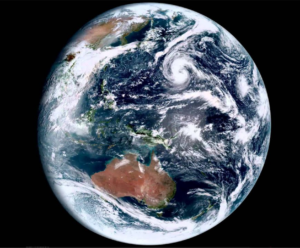 What’s a living planet to do when she feels mortally threatened? Mobilize her immune system.
What’s a living planet to do when she feels mortally threatened? Mobilize her immune system.  Tesla and Space-X CEO Elon Musk thinks AI or artificial intelligence is “the greatest risk we face as a civilization.” He predicts that the nation with the strongest computer science might be inclined to trigger WWIII through a preemptive strike.
Tesla and Space-X CEO Elon Musk thinks AI or artificial intelligence is “the greatest risk we face as a civilization.” He predicts that the nation with the strongest computer science might be inclined to trigger WWIII through a preemptive strike. Despite the lateness of the hour and the dire state of just about everything we hold dear, might it still possible to slow and perhaps even reverse the global race to ruin?
Despite the lateness of the hour and the dire state of just about everything we hold dear, might it still possible to slow and perhaps even reverse the global race to ruin?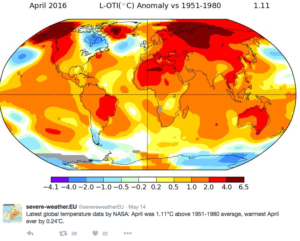 Let’s put the brakes on our fossil-fuel-burning CO2 emissions, which have risen to a level not seen on Planet Earth for 3 million years. When CO2 emissions rise, so does the global temperature. The oceans are taking the biggest hit because water absorbs heat like nothing else. As oceans warm up and acidify from carbonic acid, coral reefs die and entire food chains collapse, including those depended upon by millions of humans.
Let’s put the brakes on our fossil-fuel-burning CO2 emissions, which have risen to a level not seen on Planet Earth for 3 million years. When CO2 emissions rise, so does the global temperature. The oceans are taking the biggest hit because water absorbs heat like nothing else. As oceans warm up and acidify from carbonic acid, coral reefs die and entire food chains collapse, including those depended upon by millions of humans. Fantasy? Seventy years of midnight raids on laboratories, equipment confiscations by unidentified parties, threats to researchers and too many mysterious deaths of energy inventors suggest that technologies have and do exist that offer immediate alternatives to the fossil status quo. Consider that 5,347 patents are presently sequestered by the U.S. patent office and therefore banned from commercial development. Likely a large portion of these patents are energy related.
Fantasy? Seventy years of midnight raids on laboratories, equipment confiscations by unidentified parties, threats to researchers and too many mysterious deaths of energy inventors suggest that technologies have and do exist that offer immediate alternatives to the fossil status quo. Consider that 5,347 patents are presently sequestered by the U.S. patent office and therefore banned from commercial development. Likely a large portion of these patents are energy related. On average, every 90 minutes, worldwide, citizen observers report instances of aircraft of unknown origin flying through our skies. Often, impressive photographs and videos are provided as proof of the observations. Many high-level military, government and retired corporate technical staff have testified in public about personal experiences observing or working with advanced ET technology and biological entities. Unusual crafts move through our skies silently, sometimes hovering and often performing seemingly impossible maneuvers. It’s highly doubtful these unconventional aerial ships rely on petroleum fuels for propulsion. Could such advanced energy technologies quickly replace our 18th century fossil power systems currently in use? And really, who’s in control of these crafts?
On average, every 90 minutes, worldwide, citizen observers report instances of aircraft of unknown origin flying through our skies. Often, impressive photographs and videos are provided as proof of the observations. Many high-level military, government and retired corporate technical staff have testified in public about personal experiences observing or working with advanced ET technology and biological entities. Unusual crafts move through our skies silently, sometimes hovering and often performing seemingly impossible maneuvers. It’s highly doubtful these unconventional aerial ships rely on petroleum fuels for propulsion. Could such advanced energy technologies quickly replace our 18th century fossil power systems currently in use? And really, who’s in control of these crafts? To achieve long-term sustainability, we’d need to significantly ratchet back our global population, as the planet’s remaining resource base simply cannot support the 10 or 11 billion people forecast by the UN for the end of the present century unless affluent consumers are willing to drastically reduce personal consumption and share resources with those without. Scientists say we’d need 4 Planet Earths if everyone were to try and emulate the American lifestyle. It’s just not possible.
To achieve long-term sustainability, we’d need to significantly ratchet back our global population, as the planet’s remaining resource base simply cannot support the 10 or 11 billion people forecast by the UN for the end of the present century unless affluent consumers are willing to drastically reduce personal consumption and share resources with those without. Scientists say we’d need 4 Planet Earths if everyone were to try and emulate the American lifestyle. It’s just not possible. As industrial agriculture accounts for a third of our global greenhouse gases and the majority of water pollution and species loss, we’d need to shift to a mostly plant-based diet. This would require minimizing production and consumption of meat and dairy products. As a result, we’d all become much healthier, saving hundreds of billions of dollars and massively reducing human and animal suffering.
As industrial agriculture accounts for a third of our global greenhouse gases and the majority of water pollution and species loss, we’d need to shift to a mostly plant-based diet. This would require minimizing production and consumption of meat and dairy products. As a result, we’d all become much healthier, saving hundreds of billions of dollars and massively reducing human and animal suffering. You bet. Elon Musk recently warned that deploying AI in the form of autonomous weapons could trigger a WWIII. As early as 1978, visionary scientist Dr. John Lilly coined the term “Solid State Entity” or SSE to describe his concern that the “silicon based universe” (computers, AI, etc) is utilizing the “carbon based universe” (humans) to enable self-replication with the goal of eventually becoming independent of human control.
You bet. Elon Musk recently warned that deploying AI in the form of autonomous weapons could trigger a WWIII. As early as 1978, visionary scientist Dr. John Lilly coined the term “Solid State Entity” or SSE to describe his concern that the “silicon based universe” (computers, AI, etc) is utilizing the “carbon based universe” (humans) to enable self-replication with the goal of eventually becoming independent of human control.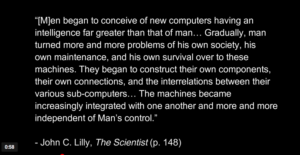

 Let’s start with exposing the fact that, according to Forbes Magazine, super-rich individuals and their families have at least $32 trillion of hidden financial assets squirreled away in offshore tax havens. Secretive corporations likewise hold off-budget balance sheets that hide many more trillions. Oxfam notes that, appallingly, just “7 billionaires are as rich as the poorest half of the world’s population” and that “the top 1% has as much total wealth as the rest of the world combined.”
Let’s start with exposing the fact that, according to Forbes Magazine, super-rich individuals and their families have at least $32 trillion of hidden financial assets squirreled away in offshore tax havens. Secretive corporations likewise hold off-budget balance sheets that hide many more trillions. Oxfam notes that, appallingly, just “7 billionaires are as rich as the poorest half of the world’s population” and that “the top 1% has as much total wealth as the rest of the world combined.”
 The key to such a future is for affluent individuals and nations to live more simply, leave stuff for others and generously share the wealth with those who have little or none. This won’t happen, though, unless enough people begin to recognize our common humanity. Moreover, those who hold positions of power and influence must be willing to implement programs that benefit all, not just the privileged few.
The key to such a future is for affluent individuals and nations to live more simply, leave stuff for others and generously share the wealth with those who have little or none. This won’t happen, though, unless enough people begin to recognize our common humanity. Moreover, those who hold positions of power and influence must be willing to implement programs that benefit all, not just the privileged few. Though the time is rapidly approaching when deleterious circumstances will overwhelm even the best efforts to change course, informed, wise and preemptive actions now could make all the difference in preventing Homo sapiens from joining the ever-increasing list of failed species. This is our charge — today, tomorrow, and for whatever time it takes.
Though the time is rapidly approaching when deleterious circumstances will overwhelm even the best efforts to change course, informed, wise and preemptive actions now could make all the difference in preventing Homo sapiens from joining the ever-increasing list of failed species. This is our charge — today, tomorrow, and for whatever time it takes.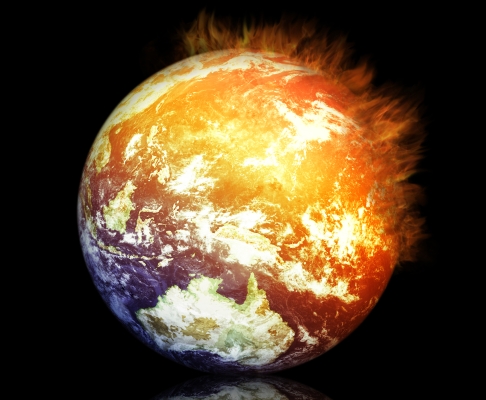
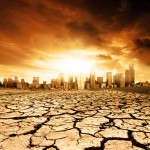 04 was hot, setting a new record in the period of instrumental data, but 2015 blew right past it, shattering the previous high mark. 2016 is on track to intimidate both 2014 and 2015.
04 was hot, setting a new record in the period of instrumental data, but 2015 blew right past it, shattering the previous high mark. 2016 is on track to intimidate both 2014 and 2015.
